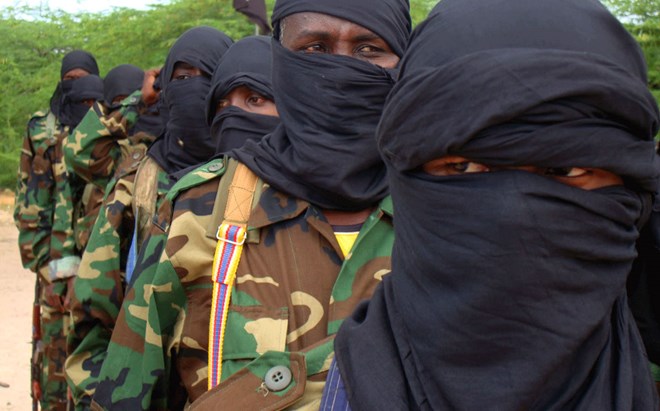
Tuesday June 1, 2021
BY CALEB WEISS

Members of the hard line al Shabaab Islamist rebel group parade during a military training exercise in Huriwaa district, southern Mogadishu. 5 September, 2010. REUTERS/Feisal Omar
Over the last several weeks, Shabaab, al Qaeda’s branch in East Africa, has conducted a bevy of attacks inside northeastern Kenya. Since the beginning of the year, the jihadist group has steadily claimed operations inside the country.
Starting on May 21, three Kenyan police officers were killed by an improvised explosive device (IED) blast in Mandera County. In its claim of responsibility, Shabaab said that “the mujahideen killed 13 Kenyan crusaders in an ambush in Mandera County, 12 of whom were killed in an explosion while a police officer was shot dead by the mujahideen.”
The group routinely inflates the casualty numbers in the vast majority of its claims.
Then on May 18, at least 8 Kenyan soldiers were killed by another IED blast and a subsequent ambush on a major road inside Lamu County. At least 12 other soldiers were wounded. In Shabaab’s claim of responsibility for the attack, it again inflated the numbers saying that “20 Kenyan soldiers were killed” in the ambush.
Not long after that strike, the Kenyan Defense Forces (KDF) launched a major operation inside the Boni Forest, Shabaab’s longtime stronghold inside Lamu County. However, details are scant on the overall effectiveness of that operation. Previous military raids have not dislodged the jihadists from the reserve.
On May 12, three Kenyan police reservists were killed by Shabaab in attacks against cell phone towers in Mandera County. And just two days earlier, Kenyan troops clashed with Shabaab forces as they attempted to destroy a communications mast in neighboring Lamu County. Kenyan authorities stated that the jihadists were repelled in both cases.
These recent strikes come in the wake of increased security inside the northeastern counties and specifically inside Mandera County since January. That month, Shabaab attacked a passenger bus, kidnapped three people after detonating an IED on their vehicle, and destroyed a telecommunications mast and other infrastructure.
And in December 2020, the group assaulted and destroyed a police base, detonated an IED on an ambulance, and brutally murdered a local chief. That execution came after Shabaab militants entered the Gumarey area of Kenya’s Wajir County to lecture the locals.
Shabaab in Kenya
Shabaab has long operated in Kenya, but these recent operations come after several years of increased operational tempo inside the country beginning in 2017.
These operations are mainly located in the northern and eastern counties of Mandera, Wajir, Garissa, Lamu, and Tana River. In 2019, The Standard reported that at least 100 Kenyan security personnel had been killed by Shabaab’s IEDs in those counties since 2016.
The rate of attacks inside northeastern Kenya also highlights the group’s level of control and influence in the aforementioned counties. Earlier this year, Ali Roba, the governor of Kenya’s Mandera County, was frank about the loss of control over much of his territory.
According to the governor, “Shabaab has taken control of over 50 percent of the landmass of Northern Kenya.” In speaking of his own Mandera County, he also added that “Shabaab manages more than 60 percent of Mandera with the will of the public suppressed by terror.”
That said, Shabaab also retains the ability to strike inside the Kenyan capital, as seen in 2019’s attack on the DusitD2 hotel. And in late 2020, Kenyan officials revealed that other attack plots were disrupted.
The al Qaeda branch has also been able to strike within the main US-Kenyan base in the northeast at the Manda Bay airfield inside Lamu County. That attack left one U.S. soldier and two U.S. contractors dead and many aircraft destroyed.
The DusitD2 raid, as well as the aforementioned Manda Bay assault, have been shown in Shabaab’s recent propaganda.
The group continues to routinely lambaste Kenya in its media, including a video just this week featuring a Kenyan soldier captured in 2016’s El-Adde attack inside Somalia, showing the residual importance of the country to the jihadist group.
This importance is more than evident on the ground as Shabaab continues to increase its operations and activities inside northeastern Kenya and greatly expanding the conflict outside of southern Somalia.